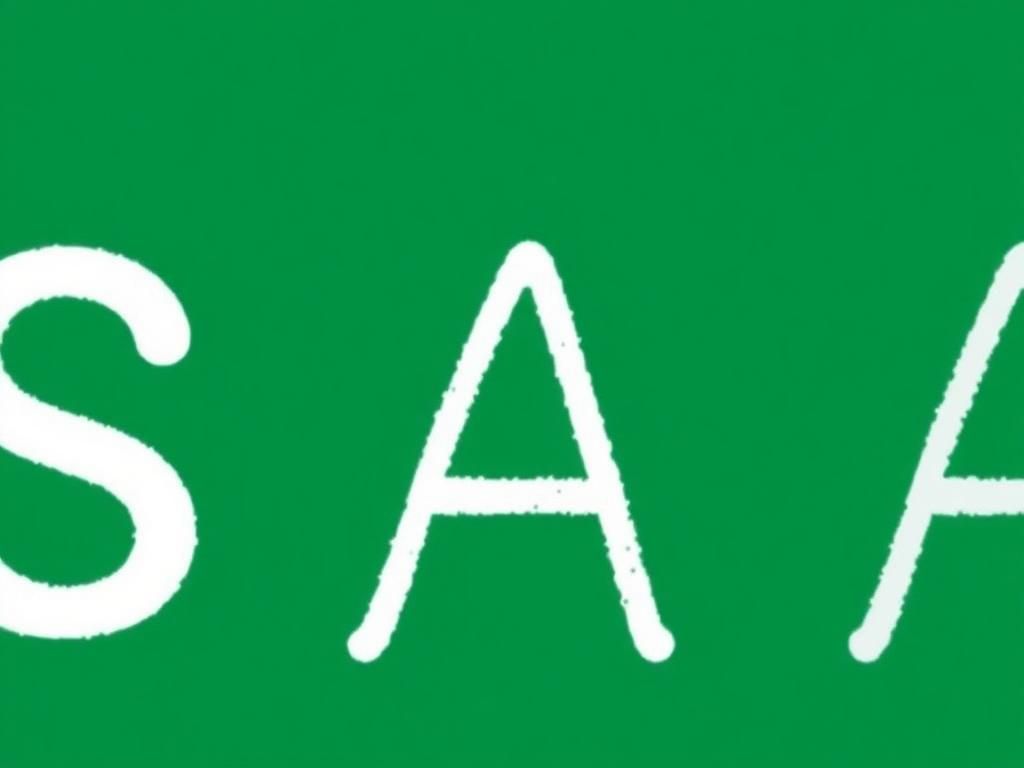Letters are the building blocks of communication, playing an essential role in language formation and expression. Among them, S and A hold a particular significance due to their frequency of use and historical depth. Understanding the importance of these letters not only enriches our grasp of the English language but also provides deeper insights into the cultural and semantic themes they represent.
The Letter S
Characteristics of the Letter S
The letter S is notably versatile in its phonetic representation. It can be articulated as a voiceless sound, as in snake, or a voiced sound in specific contexts, such as the plural form of nouns. In terms of form, S appears as an upper-case ‘S’ at the beginning of sentences or proper nouns, while it transforms into a lower-case ‘s’ in other contexts. The distinct shapes of both forms are crucial in written communication, allowing for differentiation between names, nouns, and context within sentences.
Usage in Grammar and Sentence Structure
In English grammar, S plays a vital role in pluralization. The addition of ‘s’ at the end of a noun signifies that the item is more than one. For example, the singular cat becomes cats when pluralized. Furthermore, S contributes to verb conjugations, particularly in the third person singular form, such as he runs or she jumps. This grammatical framework is essential for precise communication and understanding.
Semantic Significance
Words beginning with S often carry significant meanings. Take for instance success and strength—both associated with positive attributes. Additionally, the thematic implications of terms starting with S such as safety and serenity reflect ideas of security and peace, underscoring the letter’s role in conveying comforting concepts.
The Letter A
Characteristics of the Letter A
The letter A is also diverse in its phonetics. It can be pronounced in various ways, like the short vowel sound in cat and the long vowel sound in cake. As with S, A exists in both uppercase and lowercase forms, each serving different functions in written language. The uppercase ‘A’ serves as the beginning of sentences or proper nouns, while the lowercase ‘a’ is utilized throughout common writing.
Usage in Grammar and Sentence Structure
In English, A operates as an indefinite article, indicating one of many possible items in a category, as exemplified in a dog. This article is crucial for providing clarity in conversation. Furthermore, A contributes significantly to noun constructions and adjectives, like in amazing, allowing for expressive variation in speech.
Semantic Significance
Words starting with A often evoke a sense of inspiration or creativity. Terms such as apple and ambition are commonly used not only for their meanings but also for the positive connotations they carry. The thematic implications of words like adventure and art highlight a cultural embrace of exploration and creativity, expanding our understanding of human expression.
Comparative Analysis of S and A
Frequency of Use in the English Language
When analyzing the frequency of letter usage in the English language, S is rarely outperformed by any other letter. Statistical comparison has shown that S appears more frequently in various texts compared to A, influencing their proportional representation in everyday language.
Phonetic and Linguistic Characteristics
The phonetic qualities of S and A also differentiate them significantly. For learners of English, the soft hissing sound of S can pose challenges, while mastering the short and long sounds of A is equally essential. Moreover, languages such as German or Mandarin exhibit varying pronunciations of both letters, illustrating cultural and linguistic diversity globally.

The Role of S and A in Different Languages
S and A in Non-English Languages
The letters S and A find their counterparts in various Romance languages. In Spanish, the letter S is crucial for creating plural forms, much like in English. Conversely, in French, A takes on distinct functions, influencing not just grammar but also pronunciation and context.
Cultural Significance
Words or phrases starting with S and A often hold cultural significance across different societies. For example, the term Summer resonates with warmth and renewal, while Art embodies creative expression. Such words encapsulate cultural values and traditions, linking language to identity.
Practical Applications and Activities
Fun with Letters for Learning
Engaging with the letters S and A can be both fun and educational. Word games, such as Scrabble or crossword puzzles, can enhance vocabulary related to these letters. Flashcards featuring images and words can aid in early education by emphasizing letter recognition and phonics, foundational for literacy.
Creative Writing Exercises
Prompts that encourage expanding on words that begin with S and A serve as excellent creative writing exercises. For instance, writers can be prompted to craft stories or poems that focus on themes of success and adventure, inspiring creativity while reinforcing their understanding of these letters.
Conclusion
Recap of the Importance of S and A
In summation, the letters S and A hold enormous grammatical, semantic, and cultural relevance. Their contributions to the English language and beyond underscore their significance as fundamental components of communication.
Future Considerations
As language continues to evolve, the significance of letters like S and A remains pivotal. The digital age influences both communication styles and the relevance of letter usage, compelling us to explore language further and appreciate its nuances.
References
Suggested Reading
– “The Study of Language” by George Yule
– “The Language Instinct” by Steven Pinker
Educational Resources
Explore further on the topic through platforms like [Khan Academy](https://www.khanacademy.org) or [Coursera](https://www.coursera.org), which offer courses related to linguistics and language learning.

Frequently Asked Questions
1. Why are the letters S and A significant?
Both letters are integral to grammar, serve as foundational building blocks of words, and hold cultural meanings.
2. How is the letter S used in pluralization?
The addition of ‘S’ is used at the end of a noun to indicate that there is more than one, for example, dog becomes dogs.
3. What role does the letter A play in articles?
The letter A is used as an indefinite article, expressing one among many, such as a car.
4. Can you give examples of words starting with S and A?
Words that begin with S include success and strength, whereas notable words starting with A are apple and art.
5. How do S and A differ in pronunciation?
The letter S is a consonant with a hissing sound, while A can represent short or long vowel sounds.
6. What activities can help children learn about S and A?
Activities like word games, flashcards, and creative writing prompts can significantly aid in learning.
7. What are some cultural references that start with S and A?
Cultural references such as Summer or Art resonate deeply within various societies and signify broader meanings.
8. Are there differences in the use of S and A in other languages?
Yes, different languages have unique functions and phonetic characteristics for letters S and A, shaping their linguistic landscape.
9. Why should I explore the letters S and A further?
Understanding the nuances of letters improves communication skills and enriches vocabulary and cultural appreciation.
10. What resources can help me learn more about S and A?
Helpful resources include linguistics books, online courses like those from Khan Academy, and educational websites focused on language development.
Table of Key Points
| Letter | Characteristics | Grammar Functions | Semantic Implications |
|---|---|---|---|
| S | Voiceless sound, uppercase and lowercase forms | Pluralization, verb conjugation | Words like success, safety |
| A | Short and long vowel sounds, uppercase and lowercase forms | Indefinite article, noun and adjective use | Words like apple, adventure |
